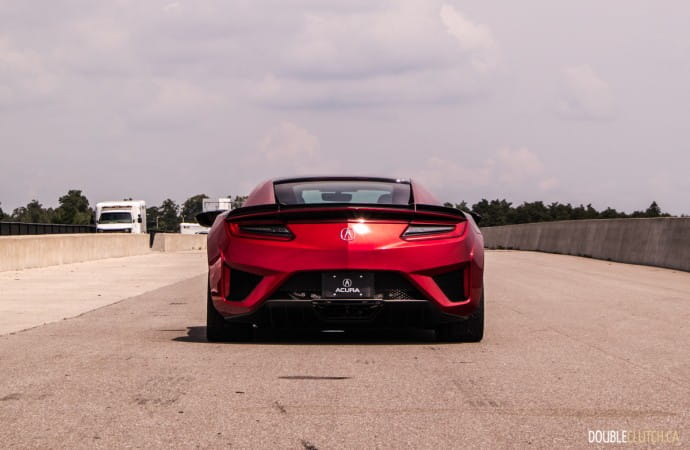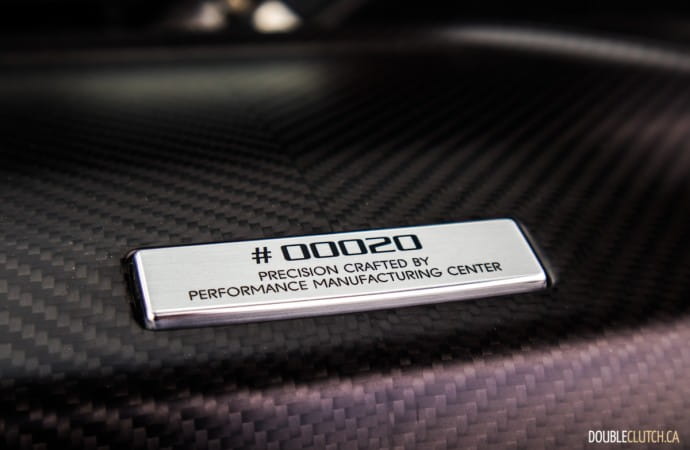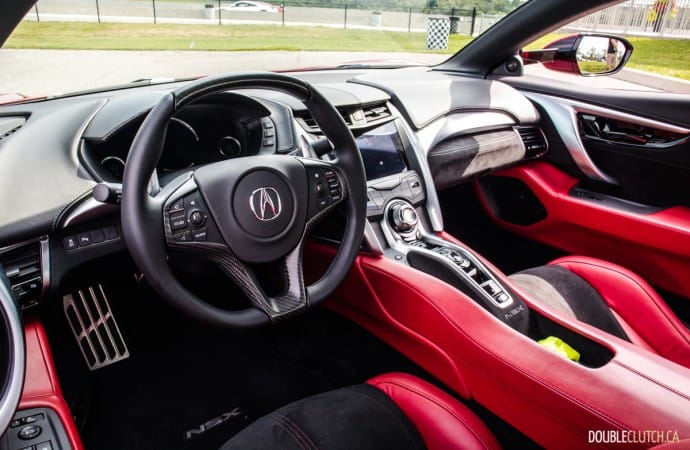The Acura NSX has always been special to me, for how Honda made the most of the “Japanese bubble era”. It was a time when the economy at home was good (read: overvalued) and engineers at all the major automakers were flush with cash to pursue the challenging projects they wanted to work on. The original car was well ahead of its time: an all-aluminum structure and body reduced weight, a high-revving naturally-aspirated mid-mounted V6 provided the exciting motivation, and generous input from F1 legend Ayrton Senna (look up the videos of him at Suzuka, in loafers and white socks) made the original NSX a very unique car even amongst its fast competition.
Honda announced the development of a new supercar way back in 2007, and it would eventually become the second-generation NSX. The world has changed a lot since then, as has the competition. The 2018 Acura NSX is a mid-engine hybrid-electric supercar, and though it has seen sales since 2016, Acura was generous enough to invite us out to the Canadian Tire Motorsport Park for some dynamic on-track testing.
The differences between the two generations of the NSX are pretty staggering: the first-generation is a relatively simple car, with a focus on the fundamentals of what makes a sports car good. Low weight, reliable high-revving engine, and uncompromising suspension geometry all come together to make the original NSX so special. I was fortunate enough to test a friend’s lightly-modified NSX at an autocross course, and even that little bit of seat time was enough to tell me that I would love to own my own copy at some point in my life.
The new second-generation NSX is a spaceship by comparison. The 3.5L, 75-degree, twin-turbo mid-mounted V6 with VTC (not VTEC!) produces 500 horsepower at 6500-7500RPM and 406lb-ft. of torque from 2000-6000RPM on its own. Adding the two torque-vectoring independent electric motors to the front axle, total system power jumps to 573 horsepower and 476lb-ft. of torque thanks to another variant of Acura’s SH-AWD system. The benefit of the electrically-driven front axle is ferocious grip, whether you’re launching from a stop, or looking to increase throttle application as you exit a sharp corner.
The second and often overlooked benefit to the NSX’s hybrid-electric system is the “torque-fill” capability that uses the battery and electric motor system to “fill-in” the gaps during turbo spool-up and between gears. This is a function seen on the McLaren P1 “hypercar” – a car that costs several times as much. Power from the gasoline engine is managed by a slick nine-speed dual-clutch automated manual transmission. Acura is particularly proud of how compact and lightweight it is, allowing for better overall weight balance and distribution.
Then there’s all the functional aerodynamics built into the NSX. Upon first impressions, you may notice the lack of active aero, or even large wings for that matter. The NSX is designed with a “form following function” philosophy, with every aesthetic decision being derived with maximum performance in mind. Acura’s “Total Airflow Management” minimizes high-speed drag, yet increases downforce – there’s about three times more downforce in the rear than in the front. I feel part of the overall lack of “active” aero is fitting with the “everyday” supercar the NSX has always been.
We weren’t able to get seat time in the NSX on the street, as we stuck to the Driver Development Track (“the DDT”) at Canadian Tire Motorsport Park. The DDT is a technical course, with eighteen turns (track configured with the 14-15-16 “Kink” for those who know), complete with elevation change, making for one of the best road courses in Ontario, save for the larger GP track at Canadian Tire Motorsport Park. I expected strong acceleration with 573 horsepower under your right foot, but the overarching theme with the new NSX is how it goes about everything, effortlessly.
The quoted weight of the new Acura NSX is a 1725kg/3802lb., which is certainly hefty compared to the first-generation car, but it’s hard to escape today’s reality that pretty much everything is heavier than in the past, thanks to more stringent crash and emissions regulations, as well as the feature creep consumers demand. That being said, the overall agility exhibited by the NSX was genuinely impressive. The electrically-assisted power steering is fairly communicative, but the biggest thing was how the NSX managed lateral weight transfer. I am normally accustomed to doing laps of the DDT with my 90-horsepower Civic Wagovan, and the NSX felt much more composed, partly due to its low centre of gravity, and advantageous weight distribution.
Thanks to the NSX’s SH-AWD system moving power around, I also really enjoyed the ability to tenaciously power out of corners with more throttle than would be normally advised, with a rear-drive vehicle. Lastly, the brake pedal felt like a standard brake pedal, which is not the norm with most hybrid electric vehicles. The optional carbon ceramic brakes will rip your face off (as expected), but how seamlessly the regenerative brakes blend in, is an impressive feat of engineering.
Simply based on the fact that it is a hybrid, with electric motors in the front axle, means the NSX needs to be driven differently, compared to a traditional sports car, like the Chevrolet Corvette. The original NSX was well-regarded for how docile it was when not pushed – comparisons to a six-cylinder Honda Accord of the time were not uncommon. Acura sought to continue this everyday livability with the new NSX, so you still get most of the creature comforts of today (save for ventilated, massaging seats, as seen in BMW’s new M5), and it even comes with the corporate standard Acura key fob. Different drive modes, including a “Quiet” mode prioritize low-noise running by staying in EV mode at low-speeds, limiting the engine to 4000rpm, and closing the active exhaust valves.
One important note is that the NSX can come with a variety of different tire options. The base tire is the Continental ContiSportContact 5P summer-only tire. On its own, this is a decent street-biased tire. Once you start to push the NSX to its limits, this tire will quickly become the limiting factor on the car. Acura also offers the Pirelli PZero Trofeo R for more serious track duty. They won’t be anywhere as comfortable, but they’ll hold up to continued abuse on the track. It begs the question of where you’d like the overall handling and comfort balance to be: the NSX is that docile six-cylinder Honda with its base tires, and I feel Acura has made the right choice for drivers who stick to the street. You just need to understand that a more aggressive tire choice will completely transform the NSX, like any other car out there.
The original Acura NSX, at one point, commanded a hefty price tag of $150,000 Canadian, and that’s in the 1990’s! The new Acura NSX starts at $189,900, before any options, taxes, or additional charges. The cars featured at this event were equipped with the aforementioned Pirelli PZero Trofeo R track tires and carbon ceramic brakes – the latter of which add $12,900 to the price, pushing the as-tested price to over $200,000. Acura does not publish fuel efficiency estimates at this time.
The 2018 Acura NSX is a car that takes a lot to really understand. It’s a car where you really need to “nerd out”, in order to absorb everything about it, and everything it does for you. Both the Audi R8 and McLaren 720S have starting prices in the same ballpark, and are both much more desirable vehicles amongst the mainstream public. Both are fast in their own unique ways, but none of them are the same kind of “fast” that the Acura NSX is. The R8 does feature Audi’s signature Quattro all-wheel drive system, but the similarities to the NSX end there. The Acura NSX continues to be a car that is largely misunderstood. It has its own flaws (some call it character), but this track event has done a good job opening my eyes to another worthy performance competitor.











































